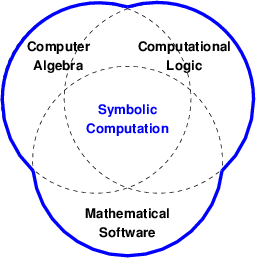Lisp: The Infinite Creativity of Symbolic Computation

Lisp (LISt Processor) is a programming language with a rich history that has played a pivotal role in the evolution of computer science. Known for its exceptional expressiveness and versatility, Lisp has been a driving force behind advancements in artificial intelligence, natural language processing, and other domains involving complex symbolic computation.

Background and Origins

Lisp was created in 1958 by John McCarthy at the Massachusetts Institute of Technology (MIT). It was designed as a tool for processing symbolic expressions, where data is represented as tree-like structures known as S-expressions (symbolic expressions). This representation allowed Lisp to manipulate complex mathematical and logical structures with ease.
Key Features of Lisp
- Expressiveness: Lisp’s syntax is concise and powerful, allowing programmers to express complex ideas in a few lines of code. This expressiveness facilitates the creation of highly complex and sophisticated algorithms.
- Symbolic Computation: Lisp excels in symbolic computation, enabling the manipulation and transformation of symbolic expressions without evaluating them. This capability has made it a preferred choice for solving mathematical and logical problems, such as finding solutions to equations or proving theorems.
- Dynamic Typing: Lisp employs dynamic typing, where data types are not declared explicitly, but inferred at runtime. This flexibility allows for the creation of programs that can handle a wide variety of data types effortlessly.
- Garbage Collection: Lisp’s runtime system automatically manages memory, freeing up memory occupied by objects that are no longer needed. This eliminates the need for manual memory management, reducing the risk of errors and memory leaks.
Applications of Lisp
Lisp has found widespread use in various domains, including:
- Artificial Intelligence (AI): Lisp has been a cornerstone of AI research, powering breakthroughs in areas such as natural language processing, expert systems, and machine learning.
- Symbolic Mathematics: Lisp’s symbolic computation capabilities have made it a go-to language for computer algebra, symbolic integration, and other mathematical operations.
- Software Development Tools: Lisp has been instrumental in the development of software engineering tools, such as Emacs and the Common Lisp Object System (CLOS).
- Education: Lisp’s clarity and simplicity make it an excellent language for teaching computer science concepts, particularly in the areas of symbolic computation and AI.
Strengths and Weaknesses
Strengths:
- Exceptional expressiveness
- Powerful symbolic computation capabilities
- Dynamic typing and garbage collection
- Extensive library support
Weaknesses:
- Can be slow for numeric computations
- Lack of built-in concurrency support
- Relatively niche usage outside of AI and symbolic computation domains
Influential Generations
Over the decades, Lisp has evolved through several generations, each with its unique contributions:
- LISP 1: The original Lisp created in 1958.
- LISP 2: Introduced garbage collection and various optimizations.
- MacLisp: Developed at MIT in the 1970s, widely used in the AI community.
- Common Lisp: A standardized version of Lisp released in 1984, became the dominant dialect used today.
- Scheme: A lightweight and efficient Lisp dialect popular in academia.
Conclusion
Lisp is a powerful and versatile programming language that has enabled groundbreaking advancements in symbolic computation. Its expressiveness, flexibility, and symbolic manipulation capabilities have made it an indispensable tool for AI research, mathematical problem-solving, and the development of complex software systems. While not as widely used as some general-purpose languages, Lisp’s unique strengths continue to attract developers, researchers, and enthusiasts who seek to unlock the infinite creativity of symbolic computation.## Lisp: The Infinite Creativity Of Symbolic Computation
Executive Summary
Lisp is a powerful and versatile programming language that has been used to create a wide variety of innovative and groundbreaking applications. Its unique features, such as its symbolic computation capabilities and its powerful macro system, make it an ideal language for tasks that require creativity and flexibility.
Introduction
Lisp (short for LISt Processor) is the second-oldest high-level programming language still in common use today. It was created in 1958 by John McCarthy at the Massachusetts Institute of Technology (MIT). Lisp is a dynamic, reflective, general-purpose programming language. It has a long history and a diverse set of dialects, the most popular of which is Common Lisp.
FAQ
Q: What is Lisp used for?
A: Lisp is used for a wide variety of applications, including:
- Artificial intelligence
- Natural language processing
- Expert systems
- Computer graphics
- Web development
Q: What are the benefits of using Lisp?
A: Lisp offers a number of benefits over other programming languages, including:
- Its symbolic computation capabilities allow it to manipulate and reason about data in a very flexible way.
- Its powerful macro system allows programmers to extend the language to meet their specific needs.
- Its dynamic typing allows programmers to change the data type of a variable at runtime.
Q: What are the drawbacks of using Lisp?
A: Lisp also has some drawbacks, including:
- Its syntax can be difficult to learn and read, especially for programmers who are not familiar with other Lisp-like languages.
- Its performance can be slower than other programming languages, especially for large programs.
- Its lack of popularity can make it difficult to find resources and support.
Subtopics
Symbolic Computation
Lisp is a symbolic computation language, which means that it can manipulate and reason about data in a very flexible way. This makes it an ideal language for tasks that require creativity and flexibility, such as artificial intelligence, natural language processing, and expert systems.
- Data structures: Lisp uses a variety of data structures, including lists, arrays, and hash tables. These data structures can be used to represent a wide variety of data, from simple numbers and strings to complex objects and graphs.
- Functions: Lisp functions are first-class objects, which means that they can be passed as arguments to other functions and returned as results. This makes it easy to create new functions that combine and extend existing functions.
- Macros: Lisp macros are a powerful tool that allows programmers to extend the language to meet their specific needs. Macros can be used to create new syntax, new data types, and even new control structures.
Macro System
Lisp’s macro system is one of its most powerful features. Macros are a type of code that can be used to generate new code. This allows programmers to extend the language to meet their specific needs. For example, programmers can use macros to create new syntax, new data types, and even new control structures.
- Syntax extension: Macros can be used to extend the syntax of the language. For example, programmers can create new keywords, new operators, and even new control structures.
- Data type extension: Macros can be used to extend the data types of the language. For example, programmers can create new data types that are tailored to their specific needs.
- Control structure extension: Macros can be used to extend the control structures of the language. For example, programmers can create new control structures that are more efficient or more expressive than the built-in control structures.
Dynamic Typing
Lisp is a dynamically typed language, which means that the data type of a variable is not fixed at compile time. Instead, the data type of a variable is determined at runtime. This makes it easy to change the data type of a variable at runtime, which can be useful for tasks that require flexibility.
- Type checking: Lisp does not perform type checking at compile time. Instead, type checking is performed at runtime. This can lead to errors if the programmer makes a mistake in the data type of a variable.
- Type conversion: Lisp provides a number of functions that can be used to convert data from one type to another. This makes it easy to change the data type of a variable at runtime.
- Dynamic binding: Lisp uses dynamic binding for variable bindings. This means that the value of a variable is determined at runtime, based on the current context.
Artificial Intelligence
Lisp has been used to create a wide variety of artificial intelligence (AI) applications. AI is the field of computer science that deals with the creation of intelligent machines. Lisp is a good language for AI because it is powerful, flexible, and expressive.
- Natural language processing: Lisp is used in a wide variety of natural language processing (NLP) applications, such as machine translation, speech recognition, and text summarization. Lisp is a good language for NLP because it can handle the複雑な data structures and algorithms that are required for NLP tasks.
- Expert systems: Lisp is used in a wide variety of expert systems, such as medical diagnosis systems, financial planning systems, and legal research systems. Lisp is a good language for expert systems because it can represent and reason about knowledge in a flexible and efficient way.
Computer Graphics
Lisp has been used to create a wide variety of computer graphics applications, such as 3D modeling, animation, and image processing. Lisp is a good language for computer graphics because it can handle the complex data structures and algorithms that are required for computer graphics tasks.
- 3D modeling: Lisp is used in a wide variety of 3D modeling applications, such as CAD/CAM systems, architectural design systems, and animation systems. Lisp is a good language for 3D modeling because it can represent and manipulate 3D objects in a flexible and efficient way.
- Animation: Lisp is used in a wide variety of animation applications, such as character animation, special effects, and video games. Lisp is a good language for animation because it can control the timing and movement of objects in a flexible and efficient way.
- Image processing: Lisp is used in a wide variety of image processing applications, such as photo editing, medical imaging, and remote sensing. Lisp is a good language for image processing because it can handle the complex data structures and algorithms that are required for image processing tasks.
Conclusion
Lisp is a powerful and versatile programming language that has been used to create a wide variety of innovative and groundbreaking applications. Its unique features, such as its symbolic computation capabilities and its powerful macro system, make it an ideal language for tasks that require creativity and flexibility.
Keyword Tags
- Lisp
- Symbolic computation
- Macro system
- Dynamic typing
- Artificial intelligence
